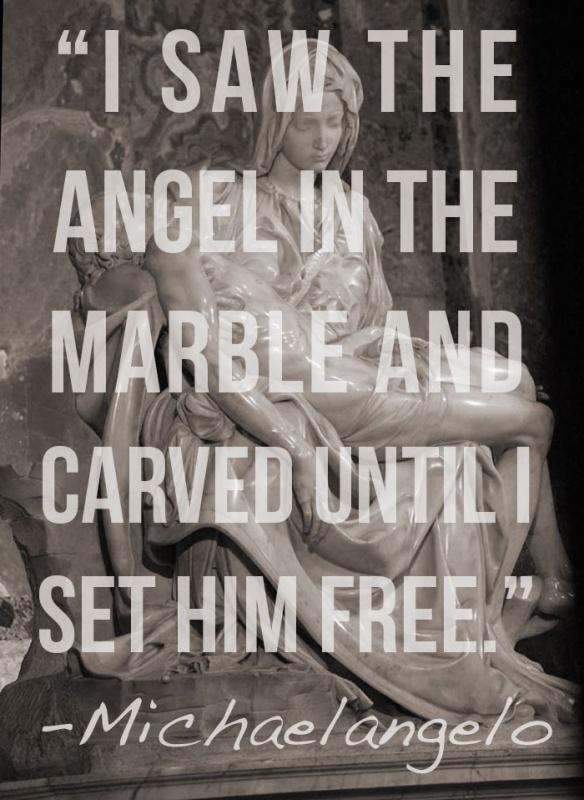I saw the angel in the marble and carved until I set him free


I saw the angel in the marble and carved until I set him free
The quote “I saw the angel in the marble and carved until I set him free” is often attributed to the famous Italian sculptor Michelangelo. This powerful statement perfectly encapsulates the essence of sculpture - the idea that the artist is not creating something new, but rather revealing the beauty that already exists within the raw material.Sculpture is a unique art form that requires a deep understanding of the medium and a keen eye for detail. Unlike painting or drawing, where the artist starts with a blank canvas, sculptors must work with a solid block of material and carefully chip away at it to reveal the form hidden within. This process requires patience, skill, and a deep connection to the material being worked with.
When Michelangelo spoke of seeing the angel in the marble, he was referring to the idea that the sculpture already exists within the raw material - it is up to the artist to uncover it. This concept is echoed in the words of many other sculptors throughout history, who have spoken of the importance of listening to the material and allowing it to guide the creative process.
In the context of sculpture, words like “carve”, “chisel”, and “shape” take on a deeper meaning. These actions are not just physical movements, but rather a dialogue between the artist and the material. Each stroke of the chisel, each cut of the knife, is a deliberate choice that brings the sculpture one step closer to completion.
The act of sculpting is a transformative process, both for the material and the artist. As the sculptor works, they are not just shaping the material, but also revealing something about themselves. The finished sculpture is a reflection of the artist’s vision, skill, and creativity - a tangible representation of their innermost thoughts and emotions.












 Friendship Quotes
Friendship Quotes Love Quotes
Love Quotes Life Quotes
Life Quotes Funny Quotes
Funny Quotes Motivational Quotes
Motivational Quotes Inspirational Quotes
Inspirational Quotes